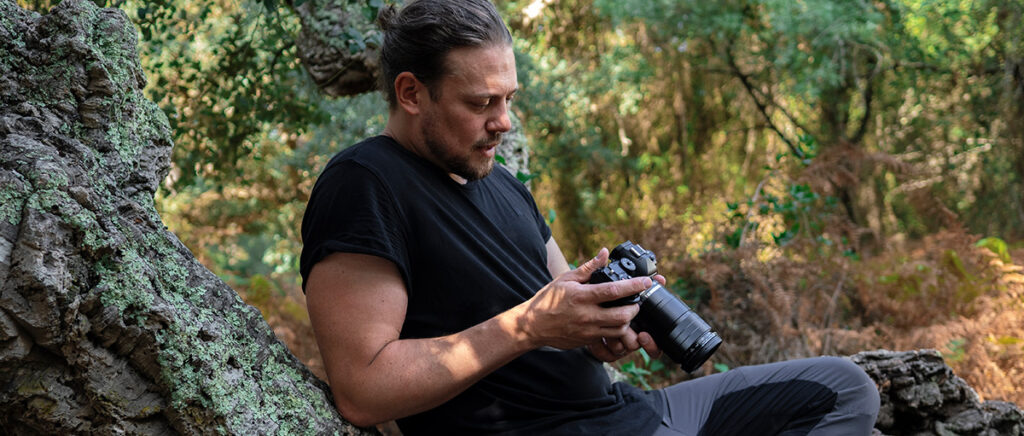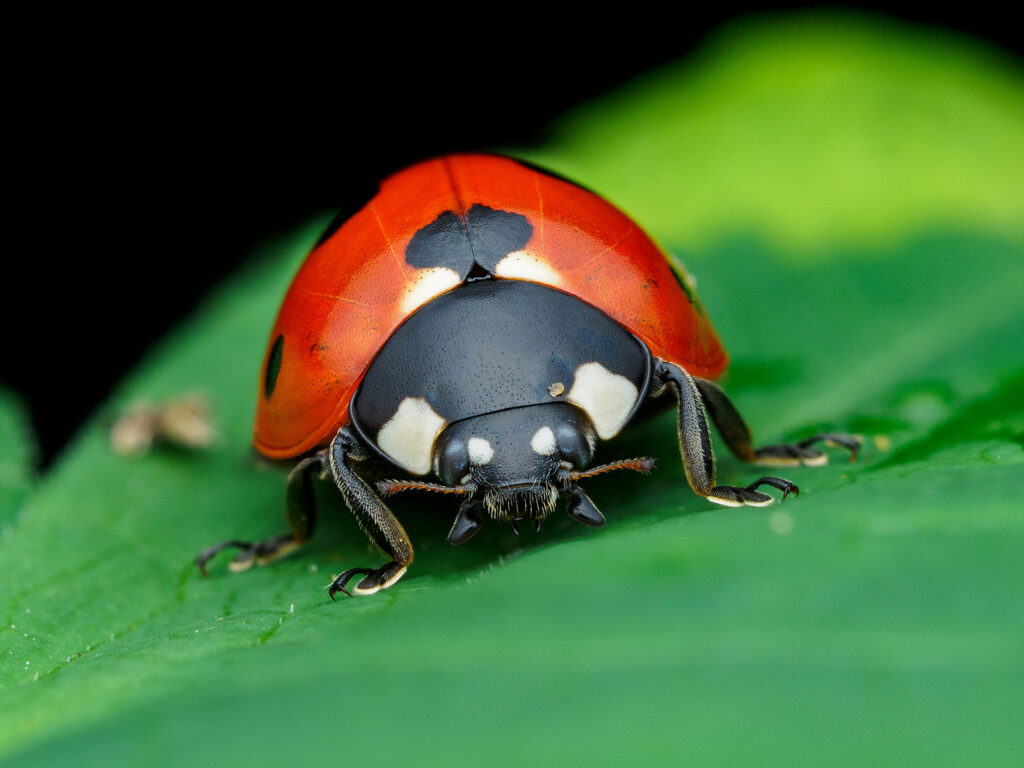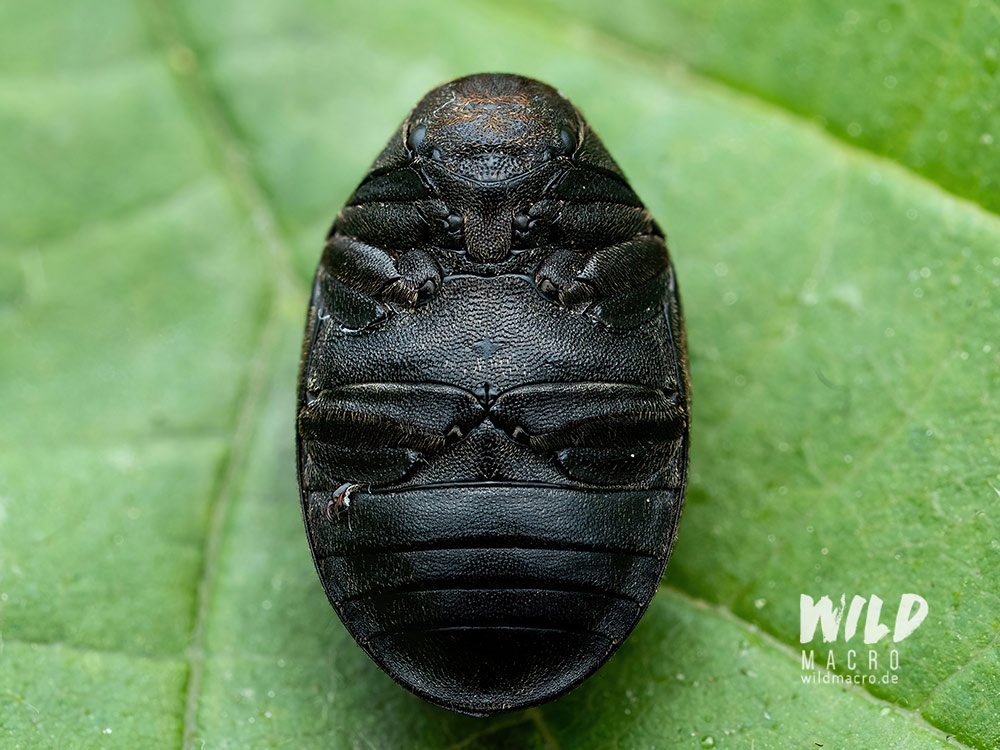02 Dec Best tips for Insect Macro Photography – A guide to photographing Insects

Macro Photography of Insects is a fascinating field and feels like opening a treasure trove.
It enables us to make all the beautiful details, textures and forms of the incredible diversity of insects visible.
If you are new to the field of Insect Macro Photography, the following tips will hopefully answer your question of “how to photograph insects?”, help you to start successfully and avoid some dead ends and get some ideas.
Finding and getting close to insects to photograph them
In order to take great macro photos of insects we first have to find them and then approach without scaring them away.
Going into detail here, would require me to write a book, as the insect kingdom is so diverse, just like all the many species.
The same applies for their habitat – where we find them – as well as their behaviour and specific escape distances, which are important if we approach them.
Still, experience and observation helps a lot in understanding the spots where they can be found, as well as their behaviour and anticipating their next moves.
Break your daily viewing routines as we usually have a top-down perspective, while many insects live in lower layers of the surrounding.
Get lower and also inspect the undersides of leaves, which we usually only see from above.
Although focusing on jumping spiders, you can find more thoughts about how to find your subjects in this article:
Insects are often bound to their host plant, or, to spots or things they need for mating and reproduction, for food, or building their homes.
Reading about these specific traits and connections helps a lot to increase chances of finding specific species.

While turning a dead mouse on a field may reveal a carrion beetle for example, searching logs, wooden benches or fences under acorn trees at the right time of the year could lead you to find an acorn weevil instead.
Approaching insects also requires experience and patience.
Slow is key here.
Be careful with your shadow, as many insects instantly flee when a shadow is suddenly cast on them.
Find the best or most interesting angle for your Insect Macro Photography
If you really want to take great macro shots of insects and make your photos stand out from the classic scientific images we know from old biology books, a good idea is to play with the angle.
Try to find an angle, that you have not seen the subject from before.
Getting close to the insect might reveal unseen details and help finding a great perspective.
Move away from the generic top-down perspective, which we are used to.
Get low, at eye-level with the insects, to create intense and personal images of your insect-subjects.


Look for an angle that shows your subject in the best light or highlight a feature by choosing an appropriate angle.
We see most insects from the top or from a distance, so getting in really close or really low, can reveal an angle and details that have not been photographed as much before.
Some insects carry mites on their underside, for example.
They will not be visible from our normal angle, but getting low allows to discover such surprise guests.
Observing the subjects also helps to find such interesting features, as some body parts may only be visible, when the insects move in a specific way.
Show interesting details and features of the Insect
As we get closer to the insect we want to photograph, we discover more and more details and features, that are initially hidden from the naked eye.
Using a macro lens reveals textures and colors that open up a whole new world of tiny details.
While it can be interesting to show the complete insect, detail shots as part of a series of photos can add an interesting depthto the impression of the specific specimen.
This may be an interesting texture of its body, like the pores-covered, matte armor of a Lesser stag beetle, a thorn-clad leg of an insect, fascinating compound eyes of a dragonfly or antennae that look like a fan.
There is an indefinite treasure trove to dig into.
Try Focus Stacking for maximum details
In order to show these fascinating details of the insect with a decent amount of sharpness and depth-of-field, it might be necessary to use a technique called Focus Stacking.
For additional info, best-practices and tips on Focus Stacking and Focus Bracketing you can check out the following articles:
Photograph Insect behavior
The undisputed holy grail of wildlife photography (and insect macro photography definitely falls into that category as well) is capturing the behaviour of the subject.
This may be insects mating, a predatory scene or unique hunting technique or an insect showcasing behaviour that is typical for the species.
There are a lot of extremely interesting scenarios – many of them even have never been captured in high quality photos or on film before.
After practicing and mastering the technical side of Insect Macro Photography, documenting the insects´ behavior can really make your photography stand out.
You can read more about this topic in another article I have written, here.
The best Camera Setup for Insect Macro Photography
Camera Body
The camera body is only of secondary importance when it comes to macro photography.
It will dictate the image quality and can also bring in additional features that help with photographing at high magnifications (like focus peaking, focus bracketing and stacking, a magnifying function or others) – but even with a beginner camera model you can shoot great macro photos.
Regarding sensor size, a crop factor camera will initially get you closer, while a full frame sensor might offer superior image quality, but will not get you as close as a Micro-Four-Thirds camera for example.
Personally, I prefer a crop-factor sensor for macro photography (although I have shot macro on DSLR full-frame for over 8 years), as it provides better depth-of-field and acts like an increased magnification or zoom.
I am using an OM SYSTEM OM-1 Mark II Micro-Four-Thirds camera, which has a lot of the beforementioned extra features on board – which is why i like to call it the swiss army knife of wildlife cameras.

What is more important than the body, in my opinion, is the macro lens though.
Macro Lens
A true macro lens enables you to take photos at a magnification of 1:1.
This gets you closer to your subjects than standard lenses and offer superior sharpness at the same time.
Common focal lengths are 60mm, 90mm, 100mm, 150mm – but there are also wide-angle lenses as well and a lot of special constructions.

There is a great range of macro lenses to choose from, with magnification-ratios ranging from the classic 1:1 up to 5:1 and more.
These will get you even closer but the handling will become more challenging and the depth-of-field at these magnifications will be paper-thin.
With some experimenting with extension tubes, diopters and reversing lenses, you can get even closer – but the handling will get more and more inconvenient.
Flash and Diffuser
You do not need a flash or diffuser for macro photography, but if you use a flash, a diffuser will bring your lighting to the next level.
For photographing sleeping butterflies or bees in the morning, shooting insects in morning dew, or other static subjects like flowers and mushrooms, there is no need for a flash.
As long as there is no wind, you can get sharp images or use a tripod, if needed.
However, if you try to photograph living, moving insects, getting a clear and sharp shot without a flash can be a real challenge.
Even more so, if the light is limited – or if you want or have to go for a focus stack for an increased depth-of-field.
That is, where a flash is the perfect solution.

Your setup will be highly mobile and flexible and the fixed lighting scenario can be applied to whatever subject you encounter.
Additional Gear
Aside from a tripod, there are various additional tools that can help for macro photography.
To list them all would take too much time and space here, but let´s at least mention a few examplary pieces of gear.
An extra diopter lens, like the Raynox DCR250 or the NiSi Close-Up lenses, provides extra magnification without buying a new lens and can also turn a standard lens into a pseudomacro lens.
They are a great low-budget solution and improve the flexibility of your setup – with great great optical quality.
Additional lighting gadgets, such as small flashes like the radio-triggered Godox MF12, or smaller LED lights, also give you more flexibility for various scenarios.
Clamps and flexible arms are handy little helpers, to fixate twigs or straws with sleeping insects on them, for example.
My favorite clamp is the Wimberley PP-211 Plant Plamp, as it has some soft foam elements for use with delicate objects.
Do not harm the subjects you photograph
Whatever style of Insect Macro photography suits you, please make sure to not harm any subjects.
It should make sense to put an absolute focus on the conservation of nature and its inhabitants, when you are planning on documenting and photographing them at the same time.
Work with what the habitat and insects offer you, but do not force poses and scenarios for the sake of a great shot.
If an insect does not offer you the angle you want, please respect that and rather move on without getting a shot than forcefully manipulating it.
Try not to destroy any plants and habitat and make sure to not leave anything behind.
I have written an article about my thoughts on Ethical Macro Photography, which you can read here.
Try, Learn and Improve


Applying these ideas and techniques should quickly improve the quality of your Insect macro Photography.
Trying makes perfect (although perfectionism is not always a good thing, which you can read more about, here.) or at least leads to improvement.
More tips and ideas for macro photography in general, and how to create outstanding wildlife macro photos, can be found in the following articles – even if they sometimes do not focus on insects directly, the thoughts can be transferred.
Sign up for the newsletter mailing list & free ebook

Did you enjoy these tips and want to learn more or improve your macro photography skills?
Stay up to date with new blog posts, reviews and tutorial- and ebook-releases.
Sign up below to get notified when the free edition of my ebook
‘How to master spider & insect macro photography’ is ready for download.







Jitte
Posted at 10:29h, 03 DecemberNice overview Chris, thanks! I’ll be sharing it to people if they want to learn more 🙂
wildmacro-chris
Posted at 10:30h, 03 DecemberHey Jitte, thanks so much for your posotive feedback. I appreciate that a lot and hope it helps one or the other 🙂